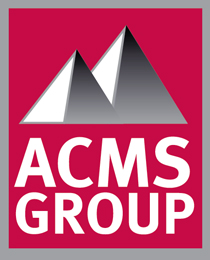Concrete is an ever-present material in factories and industrial structures throughout Indiana. And for good reason: it’s durable, reliable, resistant to abrasion and well-suited for demanding environments. But it’s far from indestructible. In fact, without proper care and protection, industrial concrete surfaces can succumb heavily to environmental detractors. When they do, they become a liability.
Thankfully, there are several tried and true methods for concrete protection. Depending on the nature of your environment and the investment you want to make in your concrete, concrete surface protection is readily attainable.
Sealers
Sealers are one of the swiftest, most effective ways to protect concrete surfaces. Epoxy and polyurethane resins are the most common materials used to seal concrete, and they do so by forming a thin plastic coating over the surface. Not only does this prevent intrusion of moisture, it also effectively repels many caustic surface agents that might otherwise mar the concrete.
Coating
Coatings are a step up from sealers in that they not only seal the concrete, but provide protective reinforcement at the surface from various detractors. Thin and thick coatings are the two common modes of protection, and the materials involved span various proprietary mixtures depending on the coating manufacturer, usually rooted in rubber emulsion, epoxy resin or bituminous compounds.
Painting
Painting is a minimally-protective way of safeguarding concrete surfaces, albeit a viable one. Industrial paint and primer compounds often deliver some protection against moisture and abrasive agents, making them a quick, easy and cost-effective solution. In truth, painting is best used in conjunction with sealers and coatings, to provide a finishing level of protection atop a more resilient protectant.
Hydrophobation
In environments where water or surface moisture is prevalent, concrete needs to be protected. Hydrophobation is the process of making concrete surfaces hydrophobic, so they bead and repel water instead of absorbing it. Silicates, resins and surface oils are all viable options for protecting concrete from the ill effects of moisture. The right solution depends on the environmental variables at play. For example, epoxy resins may be suitable for environment A, while a linseed oil mixture is better suited to environment B.
What’s the best solution?
There is no “best” solution for protecting concrete surfaces—only what will work best in the environment provided. For example, is the concrete horizontal or vertical? Are there cracks that require impregnation treatment before a surface treatment can be applied? What is the chief detractor in the current environment?
It’s important to know both the environment and the nature of the protectant you plan to use, to see if the two are compatible and to what degree. Hydrophobation in a high impact environment may not offer the protect a coating might. Likewise, simply painting concrete might not be effective in damp environments, whereas sealing first and then painting might be a better approach.
The best solution is a well-assessed one. If your concrete is at risk or needs protection, talk with an Indiana contractor who understands how to safeguard it against the unique elements you’re facing.
